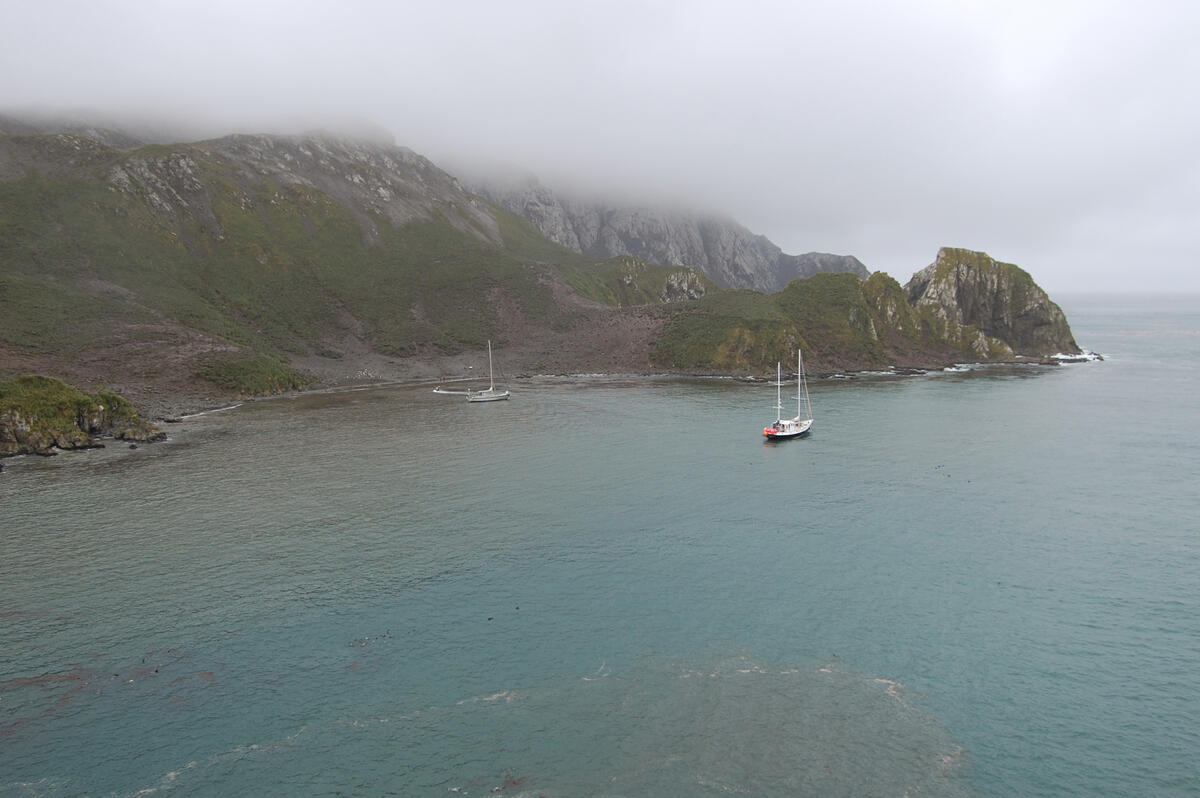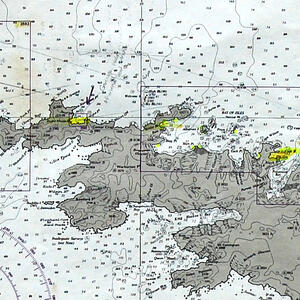
On the northern coast of South Georgia is a large open bay, filled with a number of small islands broken away from the mainland. In this Bay of Islands is Albatross Island, one of the less imaginatively named locations in the area if no less evocative a label than any other. Predictably this place is all about the great wandering albatrosses that use it as their courtship and nesting base, a population that is known to be in decline on account of long-line fishing claiming enough birds every year that the reproduction rate does not balance.
Censuses begun in the 1960s on other islands give a decline rate, in terms of nesting birds, of about 5% per year. The government has implemented tight restrictions on visitor numbers, but is helpless to deal with fishing in unregulated waters which the albatrosses reach with ease.
Albatross Island and Right Whale Bay
The great wandering albatross is a marvel to watch in the air. Although they can weigh over 10 kg (22 lb), their mastery of the wind currents and updrafts is quite incredible. They can barely be seen to flap their wings at all.
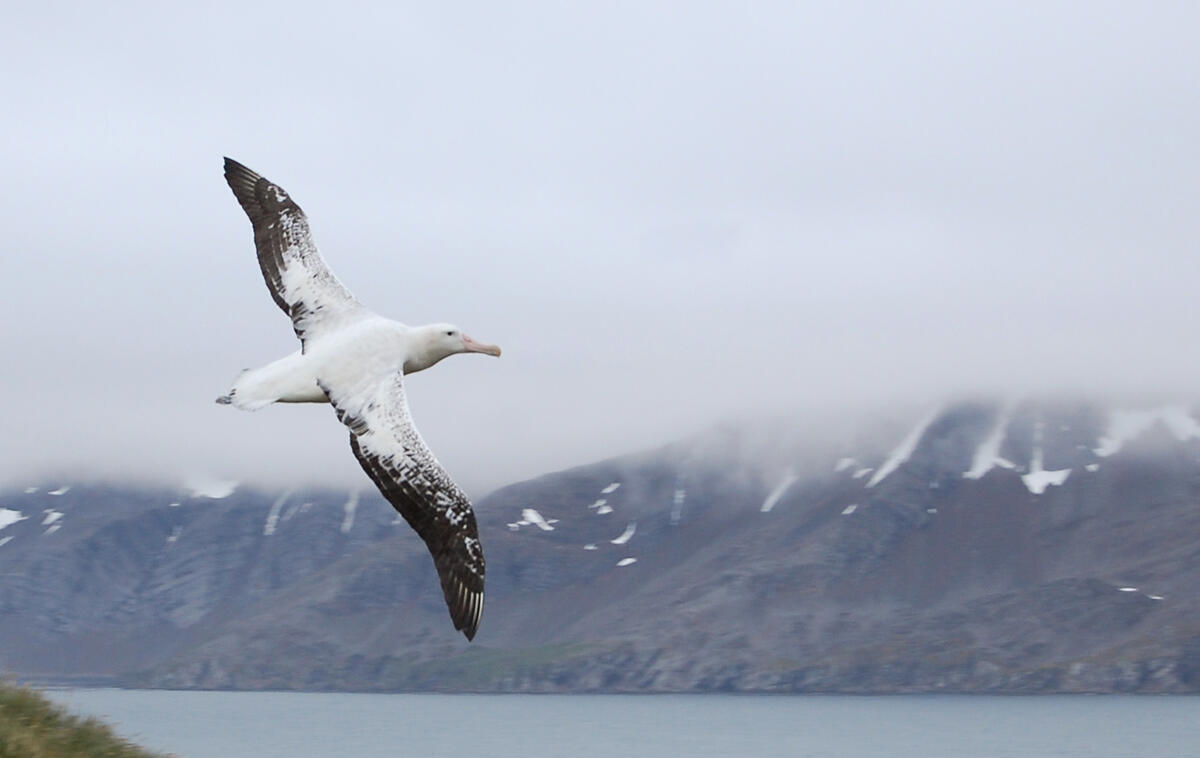
These birds mate for life, making courtship a big deal and part of the reason for their vulnerability to population reduction.
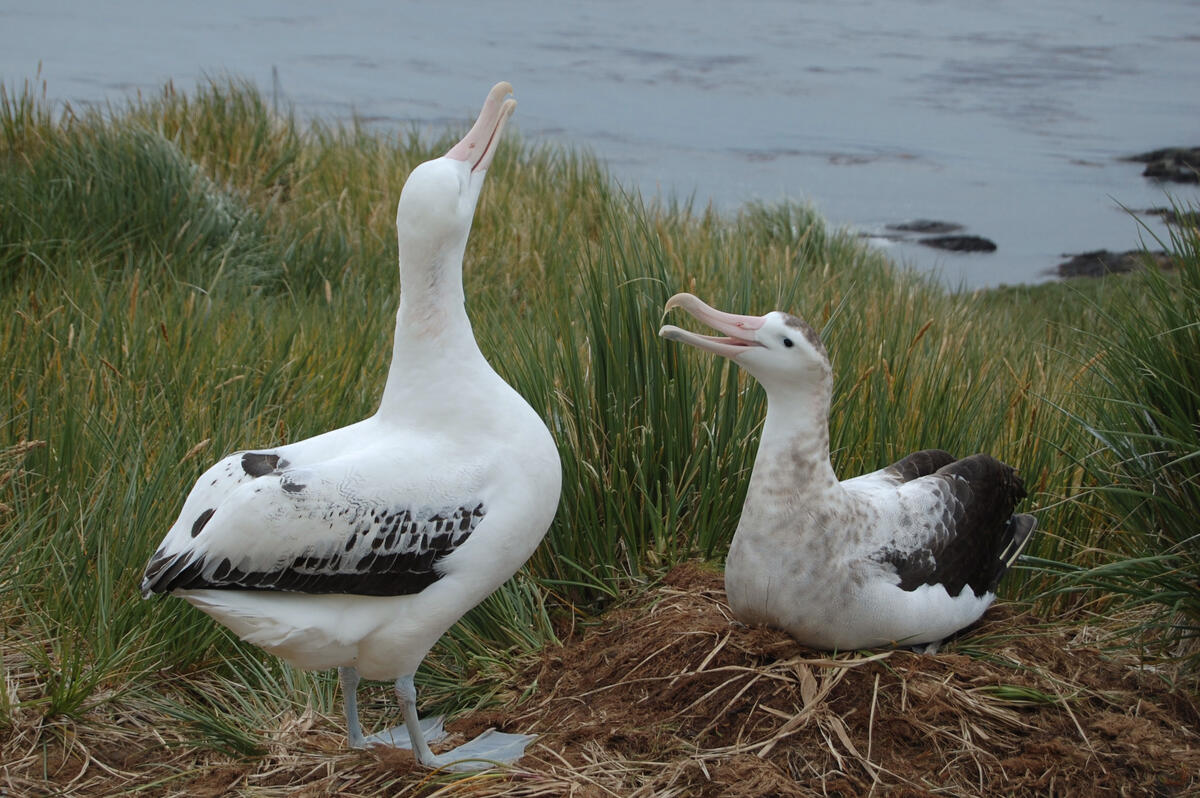
We saw a lot of courting but no bonding. The ladies seem hard to impress.
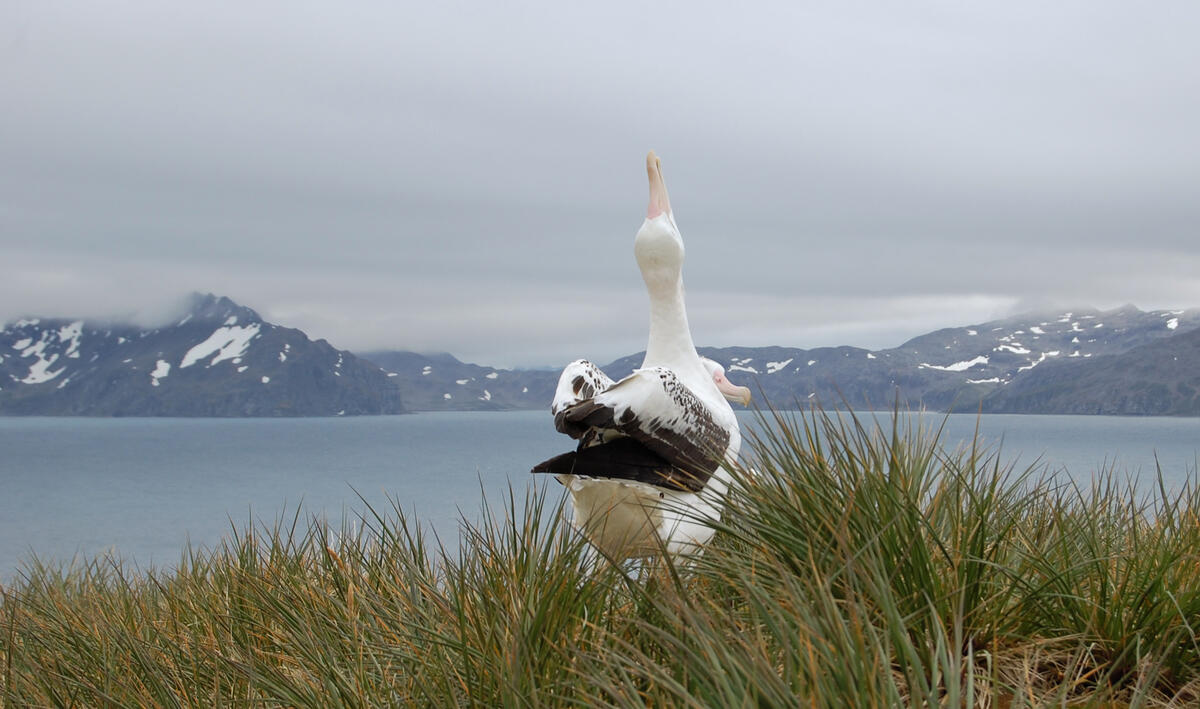
Males try to get the attention of females by pouting out their chest and spreading their wings in full. This wingspan is well over three meters (ten feet).
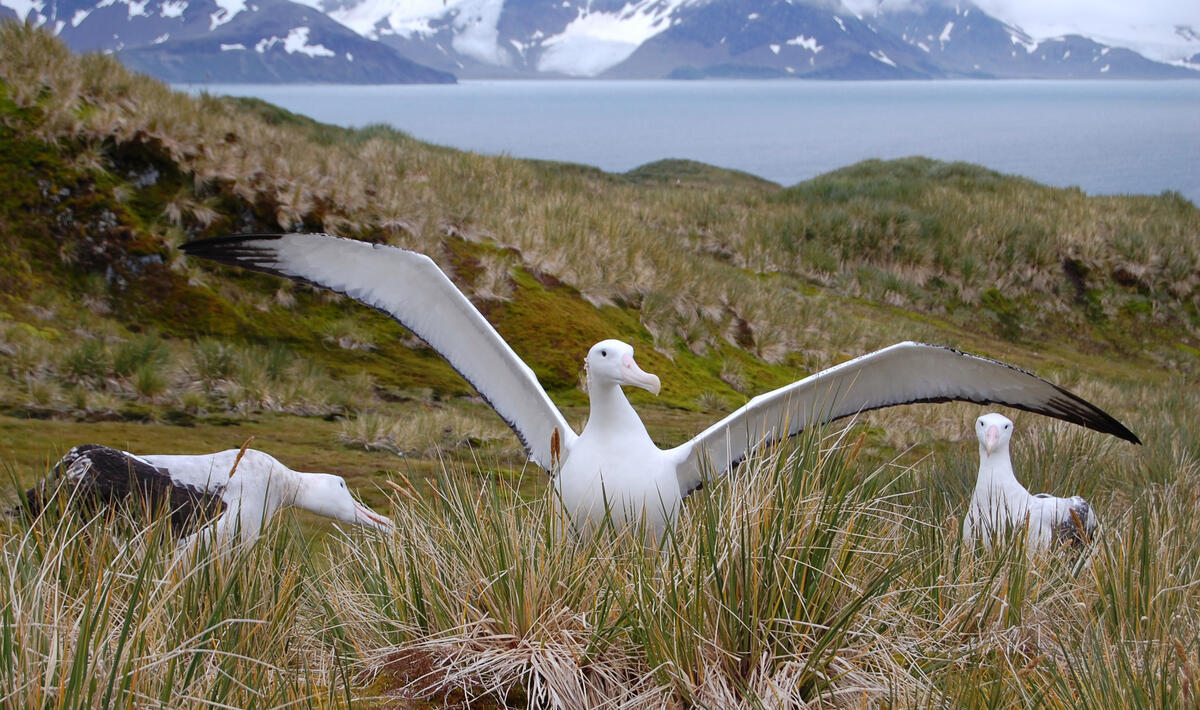
The females exhibit great interest but no commitment. This suitor was resigned to try again another time.
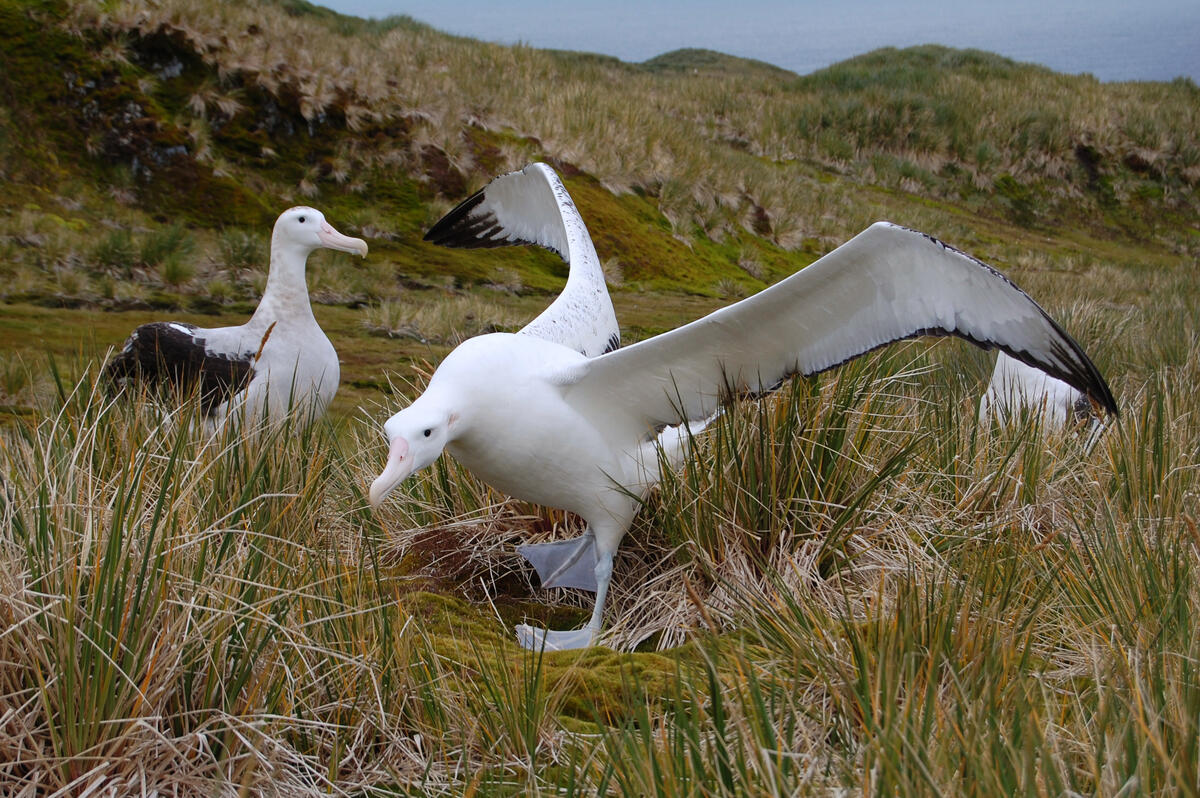
Landing is a delicate business, and it is common to witness several attempts before the bird will commit to the ground. A runway is required. Feet double as flaps and ailerons.
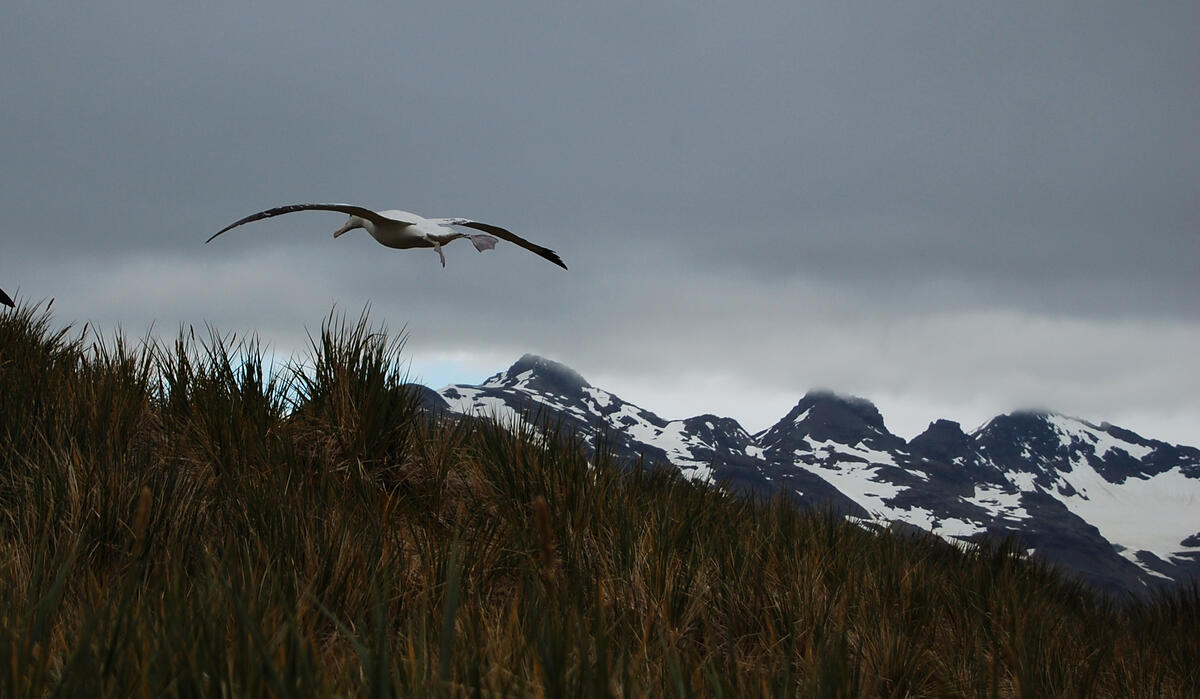
There’ll be more albatrosses on the last page.
From a Rosita Harbour surrounded by kelp on the Bay of Islands, Albatross Island can be viewed to the distant left. Salisbury Plain is on the right.
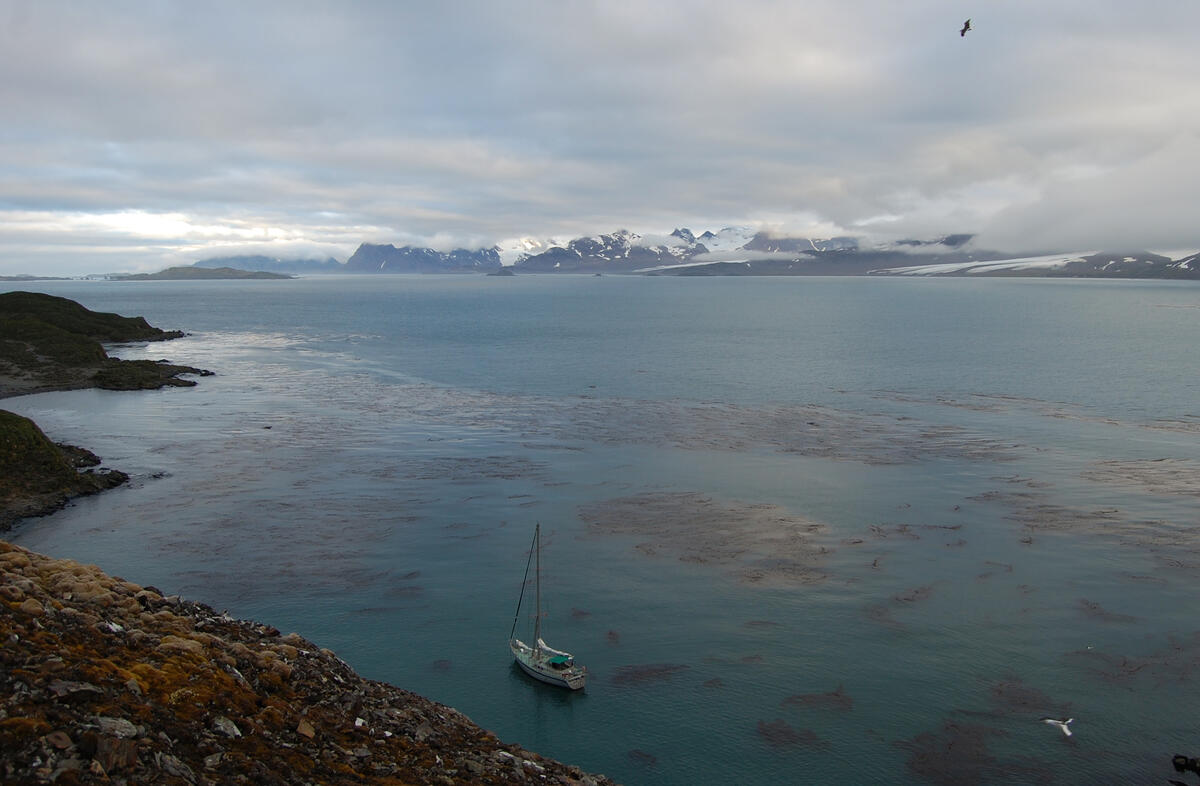
Right Whale Bay was our third and final destination featuring a large penguin population. The anchorage was ominously shrouded in an ever-changing mist.
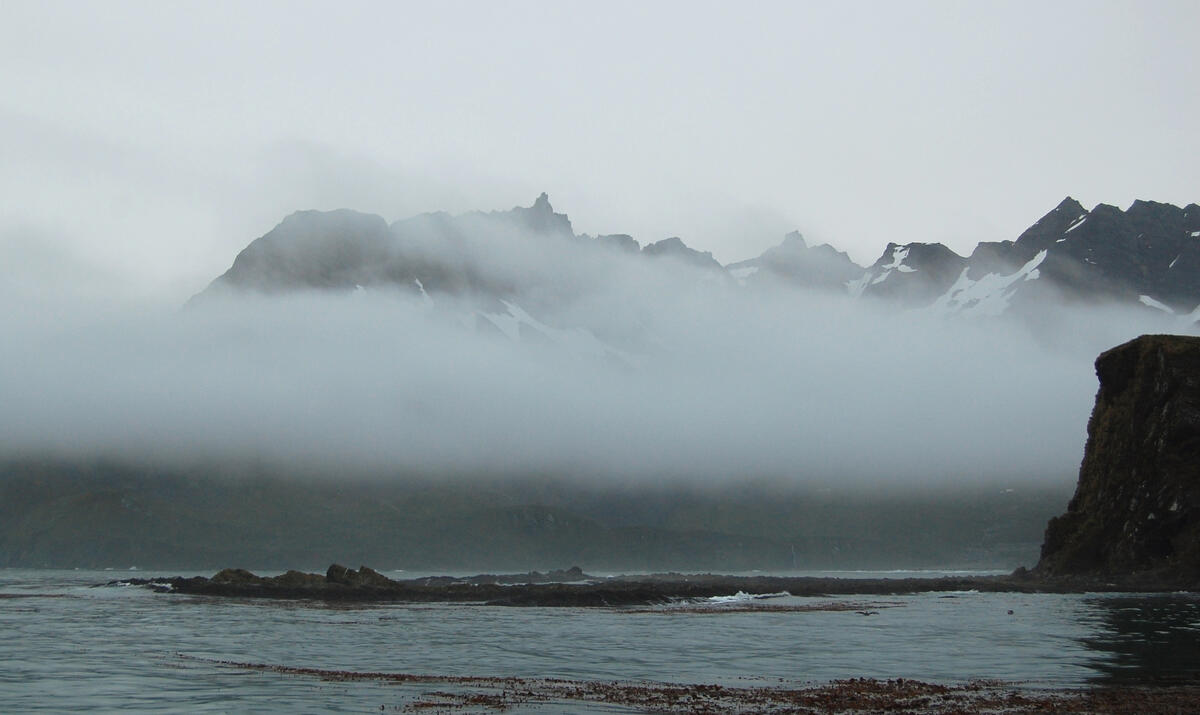
With very little room to swing to the anchor, we were able to deploy 45 m (150′) of chain. That’s in 10 m (30′) of water and on a rock bottom.
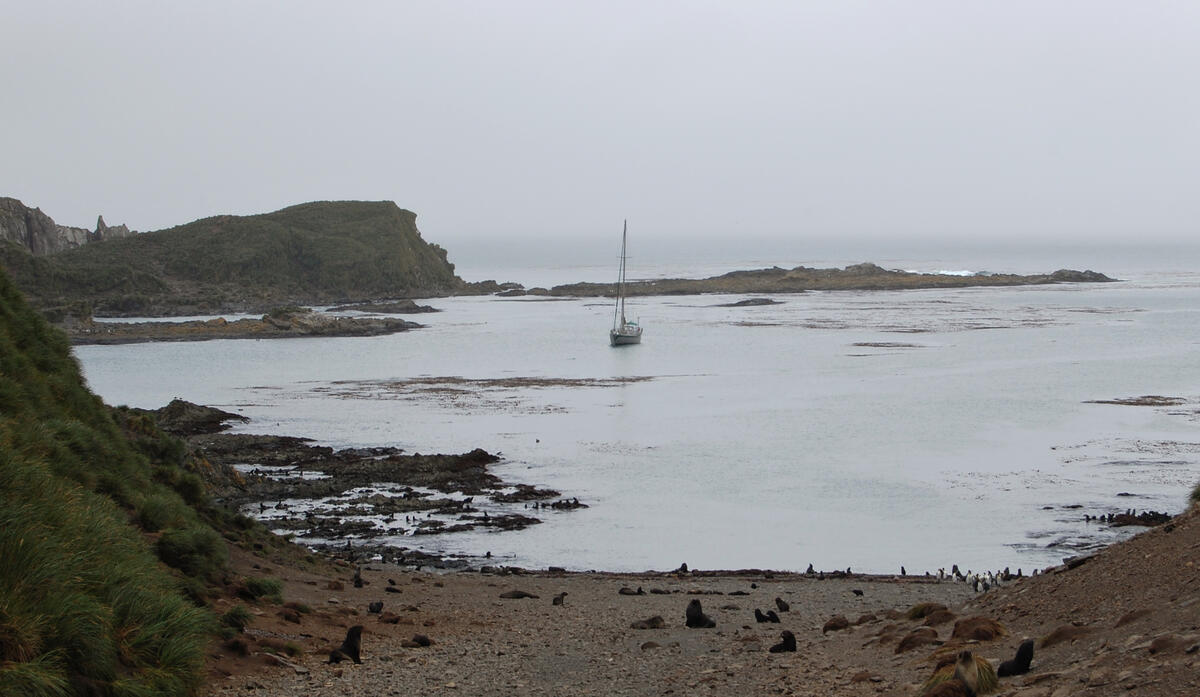
To see the rookery we had to leave Kiwi Roa here on anchor. And this is calm weather.
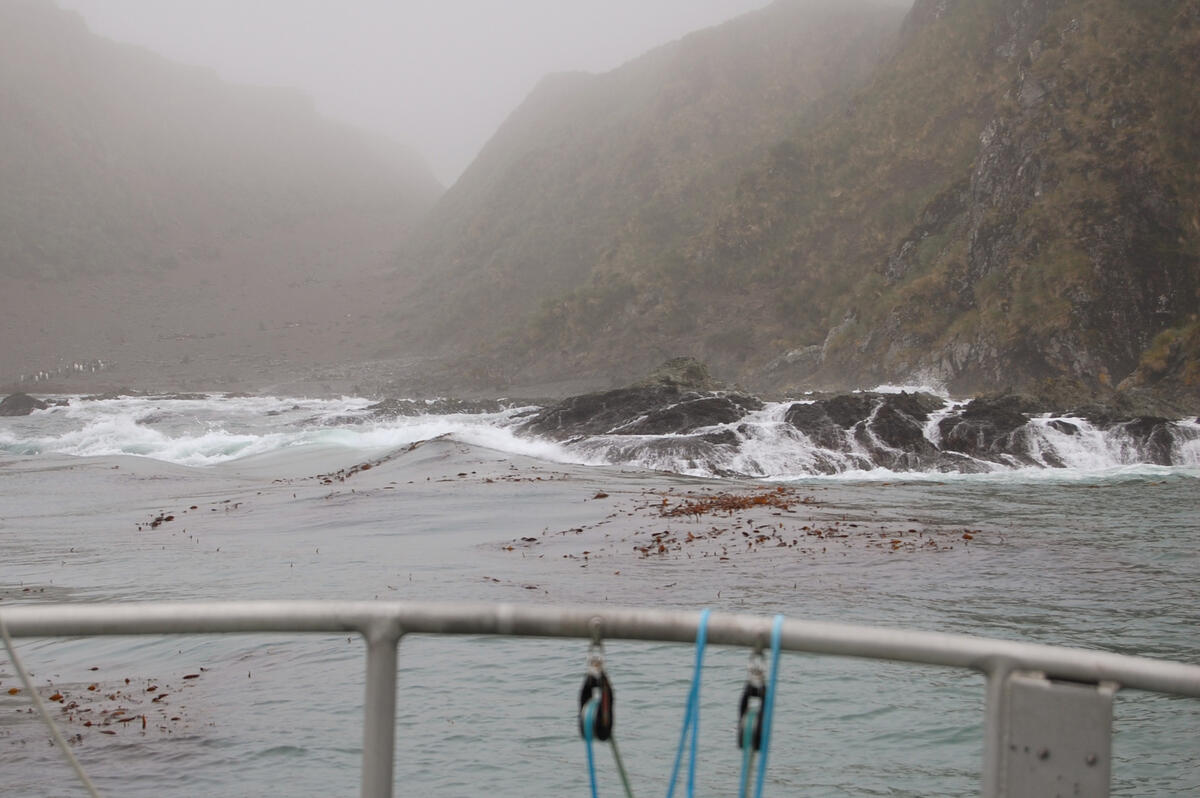
Right Whale Bay supports a sizeable population of kings. These birds have found a good spot in which to cool off.
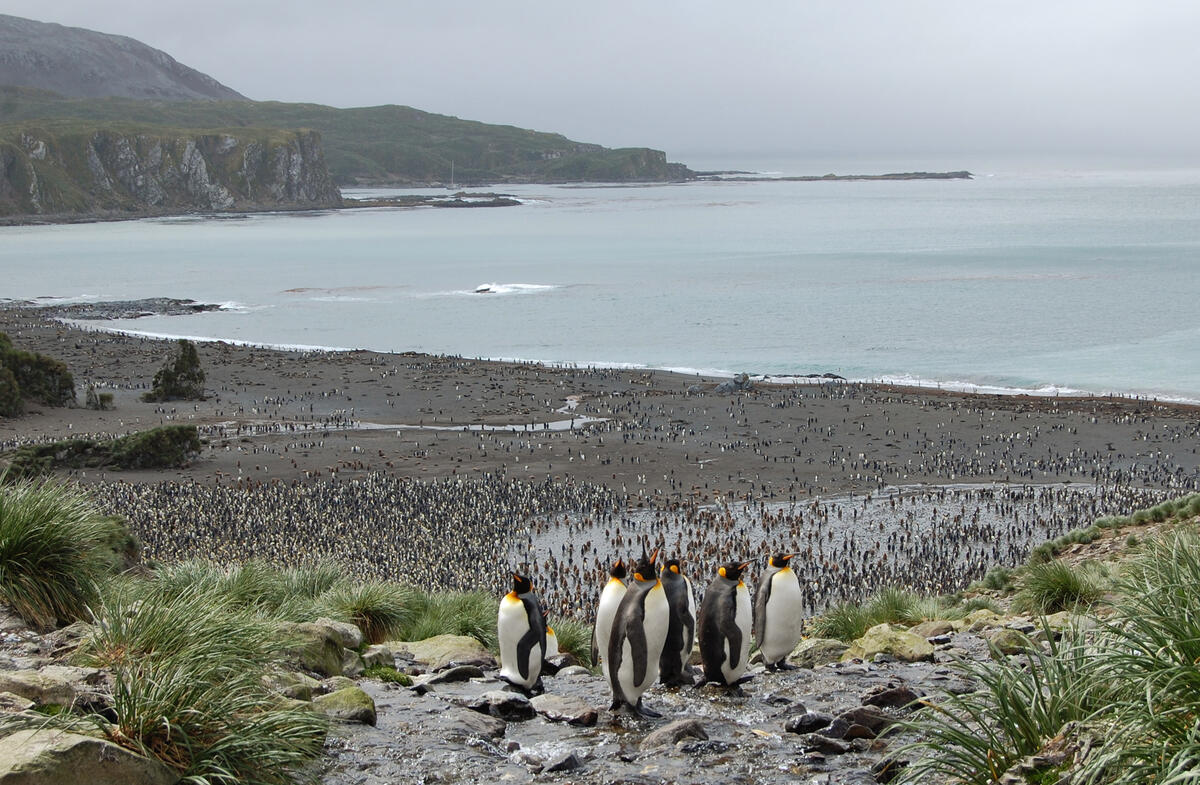
Seals, penguins, and petrels coexist in a fabrication of harmony.
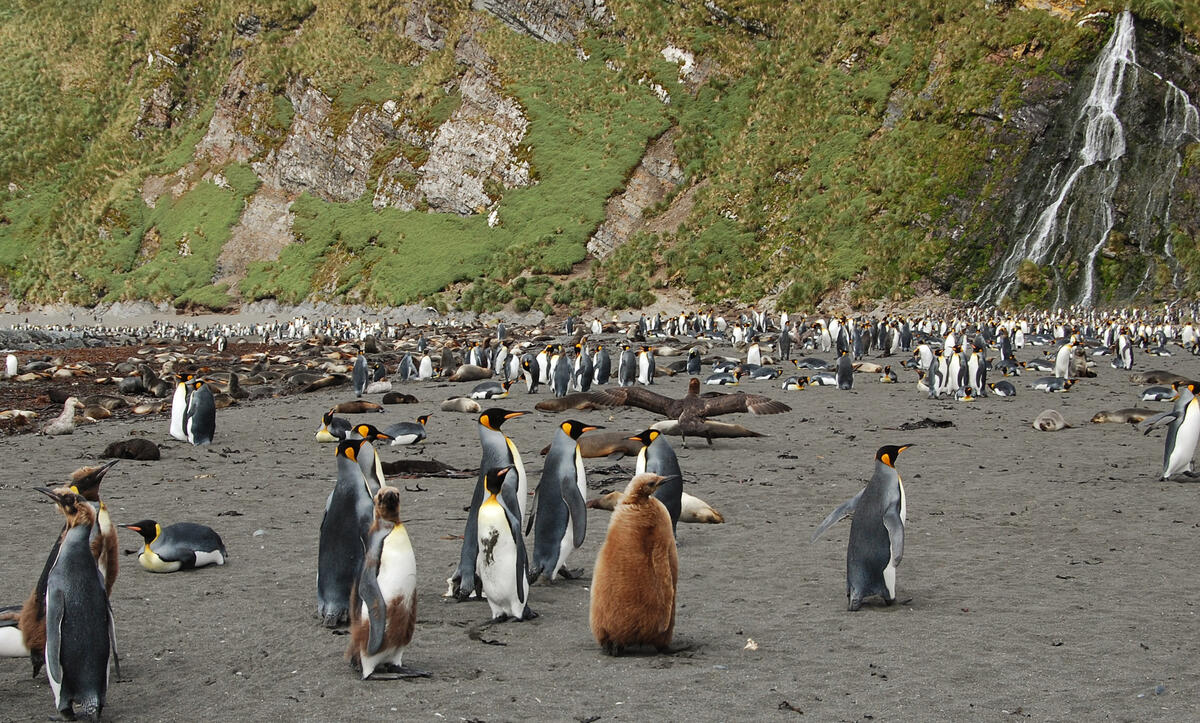
The members of the usual motley group of molting juveniles awkwardly try to integrate themselves into the community. We don’t know how many kings are here; the reader is invited to start counting.
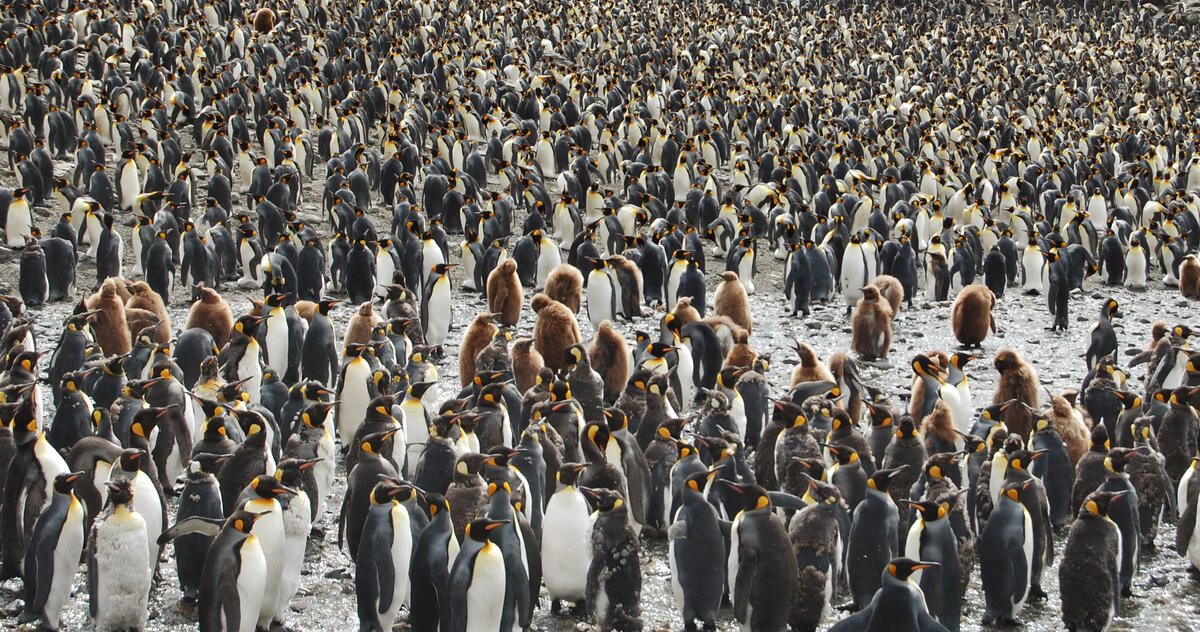
Thinning fog gave us yet more variety to the view from the boat.
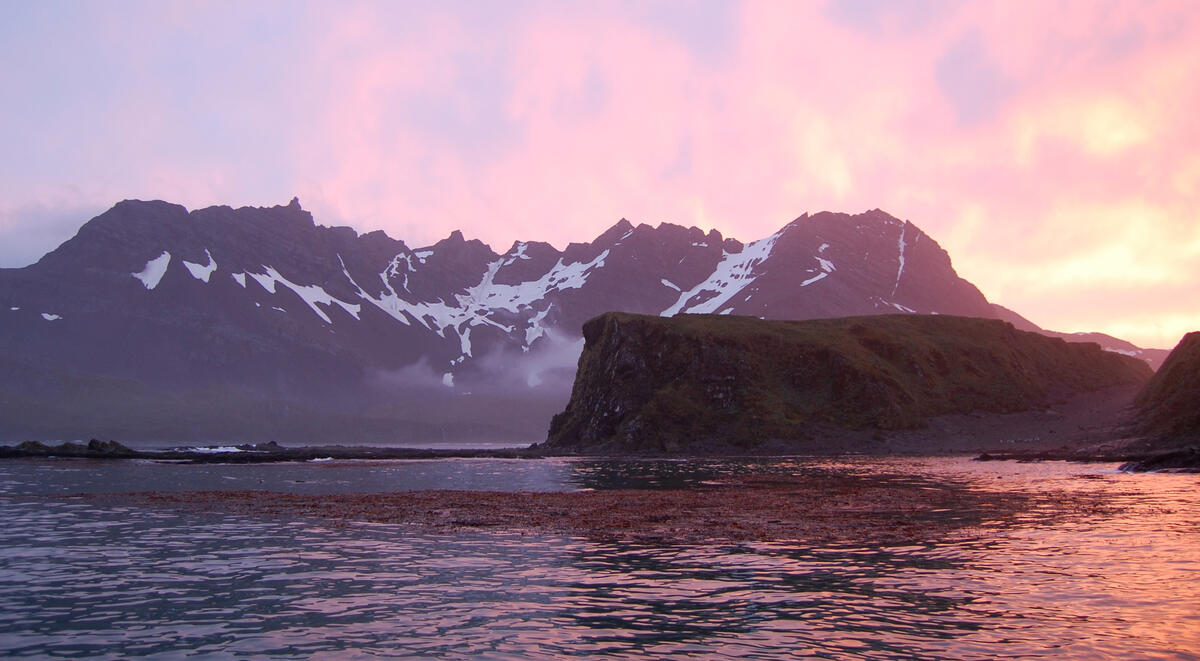
Our last destination in South Georgia was Elsehul, a supposedly protected bay at the very north west of the island. Westerly and south-westerly gales are funneled over the saddle at its head and can make for an exciting anchorage, as we were to discover.
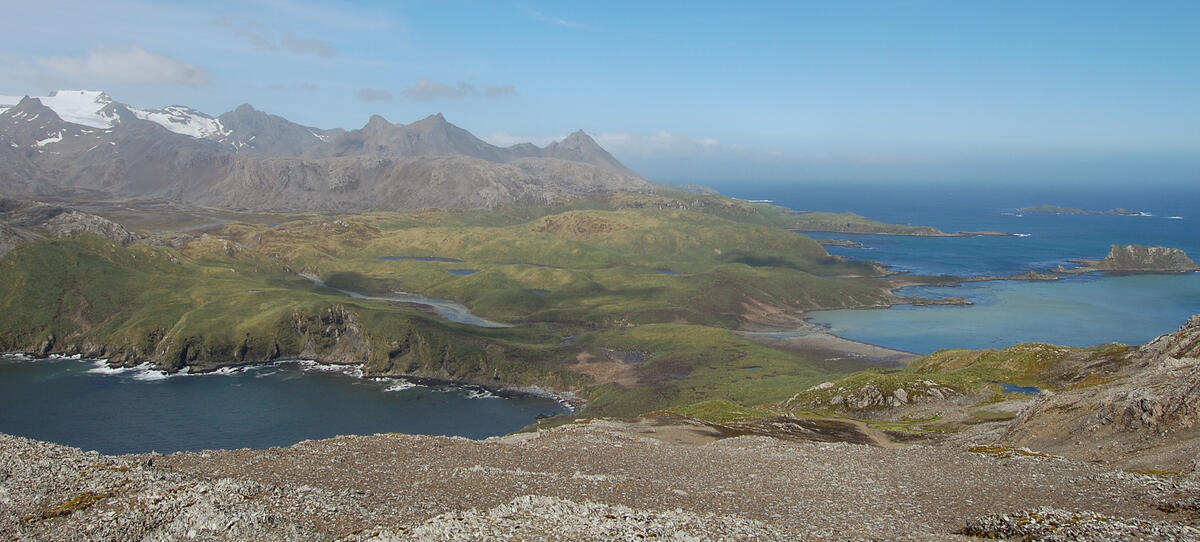
Elsehul has a Norwegian name, and bears the evidence of some history of its own. These are cast iron try pots for rendering seal blubber. The seals appear to have had the last word.
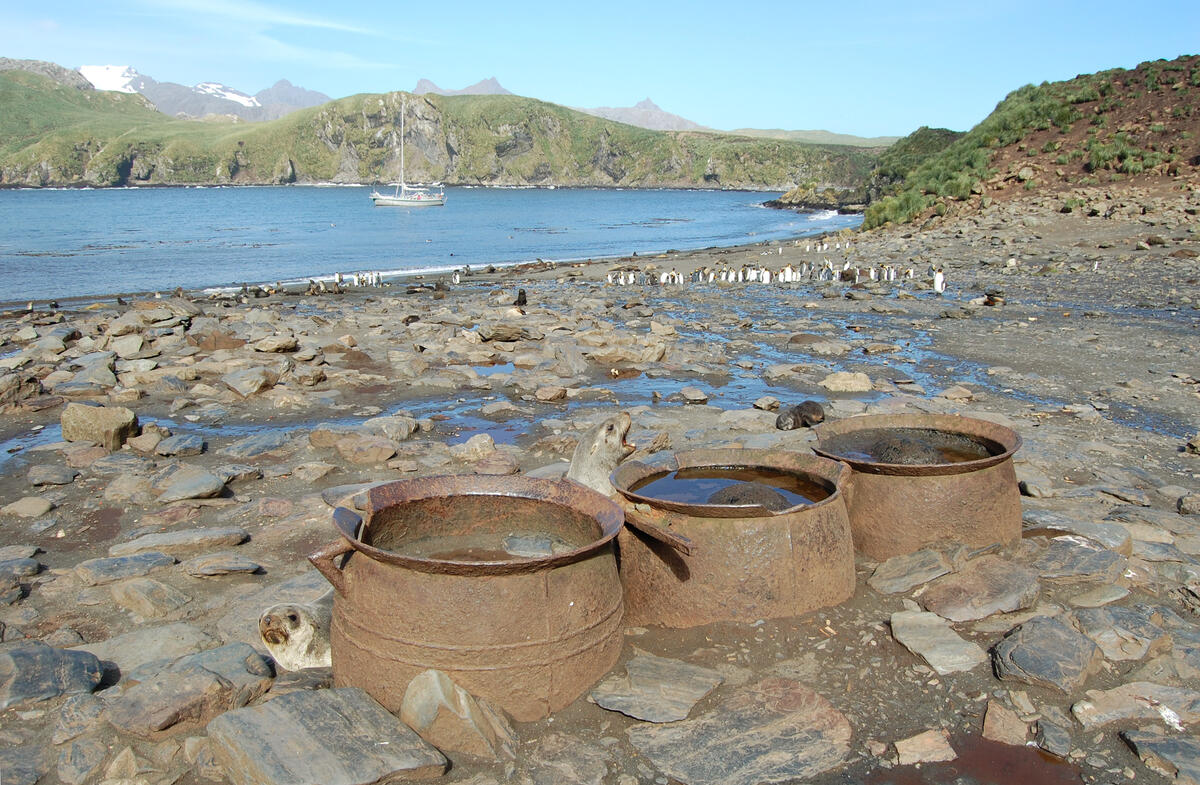
Fur seals have a tendency to kill the tussock as they trample it down, and the resulting erosion run-off is responsible for the sediment filled water visible here.
The boat next to Kiwi Roa is the 20 m (65′) and 65 ton Golden Fleece, Jérôme Poncet’s expedition yacht. She was about to share the foxhole with us during one of South Georgia’s nastier tempests.
